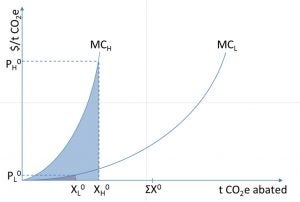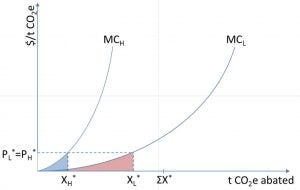Linking in a world of significant policy uncertainty
This guest blog was co-authored with Thomas Sterner
And then there were three. As of January 1st, 2018, Ontario has joined California and Québec, linking their respective carbon markets. In a post-Paris world of bottom-up climate policy, linking of climate policy matters. It provides a concrete step forward on the Paris Declaration on Carbon Pricing in the Americas. It shows that, while the U.S. federal government is dismantling much-needed climate protections, states, together with Canadian provinces, are moving forward. Linking, if done right, can be a powerful enabler of greater ambition. It also raises important questions.
To be clear, there are real advantages to linking carbon markets: Linking of climate policies is a political affirmation of joint goals and a signal to others to move toward concerted carbon policies. It also shows the real advantages of market-based environmental policies. Bigger markets also afford greater cost-savings opportunities.
The textbook illustration of such savings is instructive. Take two jurisdictions, the high-cost abatement area (“H”) and the low-cost abatement area (“L”), with vastly different marginal costs (MC) of abatement. The total costs of abatement, the respective shaded areas in this graph, will be vastly different, too:
Now consider the idealized linked market. Total abatement (ΣX) will remain the same. The difference? Prices equilibrate across markets, with PL now equal to PH, lowering the total cost of achieving the same tons of carbon dioxide-equivalent (CO2e) abated.
Abatement costs clearly matter. The lower the costs of achieving the same goal, the better. All else equal, the two jurisdictions can now afford to abate more at the same cost.
Will all else indeed be equal?
It is clear the world needs to do a lot more to stabilize greenhouse-gas concentrations. That means quickly getting net emissions of carbon dioxide going into the atmosphere to zero.
There, too, the simple textbook case can be instructive. Linking implies sending money from country H to country L to pay for the cheaper abatement. This raises important questions of baselines, accounting, and transparency. Moreover, lower abatement costs are not the only objective of climate policies. Direct support for the deployment of new, cleaner technologies often tops the list. Given the political economy of reducing greenhouse-gas emissions in the first place, there are many competing domestic objectives and indeed real tradeoffs that need attention.
The big question then is what linkage does to the overall level of policy ambition. Lower costs imply the potential for more ambitious policies. That is clearly good but the devil is in the details. It is important to assure that coordination and collaboration among different jurisdictions really do raise the level of ambition, as the Paris Declaration pledges.
It is also clear that climate policy overall ought to have a balance of bottom-up and top-down policies. Linkage is one potentially important element in that equation. The ultimate measure, however, is tons of greenhouse gases abated from the atmosphere.













